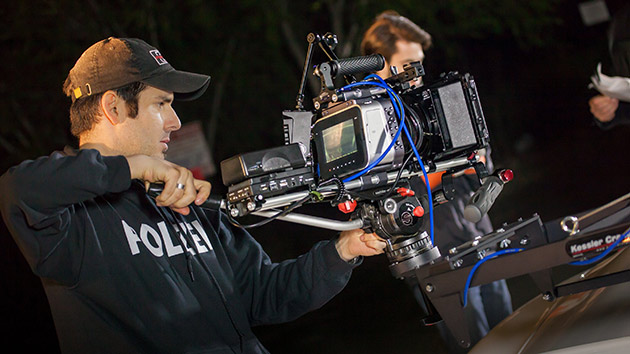What Works, What Doesn't, and What You'll Need to Make it Sing
If you pre-ordered the Blackmagic Cinema Camera (BMCC) shortly after its NAB debut, it's been a long road. The camera missed its originally scheduled ship date as Blackmagic Design dealt with behind-the-scenes issues having to do with the camera's CMOS sensors and quality control. But company CEO Grant Petty posted to the Blackmagic Forum last week to say that the sensor issues finally seem to have been fixed, and indicating that production would restart this week. Indeed, some purchasers have reported that cameras have begun trickling out into the market, meaning more users are getting their hands on the camera.
With the BMCC finally ready to come out of the shadows, we thought it would be a good time to check in with some of the very earliest users of the camera who managed to get their hands on it before production ground to a halt to find out how they equipped their cameras and what they thought of the images they got out of them. If you want the complete picture, you can click the links below to read our full interviews with Josh and Jason Diamond of The Diamond Brothers and OneRiver Media's Marco Solorio [pictured on a shoot at the top of this page]. We've also provided an executive summary, below, that will hit the high points from both conversations with links to product pages where you can learn more about the gear they're using.
Camera Cages and More
While much of the support gear that shooters already own will work with the BMCC, there are multiple options for camera cages tailored to the camera's unusual form factor. The Diamond Brothers used a BMCC cage from Wooden Camera, with the optional A-Box adapter that converts the camera's quarter-inch audio inputs to balanced XLR. The Diamonds power it with the Switronix PB70-BMCC battery pack.
Solorio opts for the View Factor Contineo BMC Cage, which he describes as "very form-fitting." "Even if I strip down to use the camera in crowd shots, I'll still have that cage on it, just because it's easy to throw side handles on it if I need to."
Dealing with the Crop Factor
The BMCC's sensor size translates to a "crop factor" of about 2.3 versus full-frame sensors. That means DPs are packing lenses that tend to the wide side. Solorio reports getting the "most pleasing" results on the wide side with the Sigma 8-16mm f/4.5-5.6 zoom, and suggests the Tokina 11-16mm f/2.8 as a somewhat faster lens.
The Diamonds also cited the 11-16mm Tokina lens as a decent option on the BMCC, but said they also relied on a recently purchased set of Duclos Cine-Mod Leica R lenses that performed well. Jason Diamond told us the 19mm Leica looks about like a 42mm lens on the BMCC, while the 8mm 3.5/8A Peleng fisheye lens seemed closer to 18mm. "If you start doing the math, you say, 'This is going to suck,'" Diamond admitted. "And then you get into the field and it's totally fine."
At any rate, Solorio agrees that when it comes to crop factors, the fear factor is overblown. "We had Super 16 cameras and 1/3-inch sensors back in the day, and everyone was able to shoot wide just fine on those cameras."
Post-Production
The Diamonds told us their ProRes footage held up very well when aggressive looks were applied in Blackmagic's DaVinci Resolve. They prefer to shoot Log in order to maximize their options when they get into post-production, but said the camera was easily switchable to the Rec. 709 color space on any occasion when it was required. A pleasant revelation, according to Jason Diamond, was that when noise is visible in the shadows, it's a gentle kind of noise. "It looks more like a grain pattern than you'd expect," he said. "It has an algorithmic, organic vibe that actually makes the image … I wouldn't say nicer, but it's not distracting at all."
Solorio agreed on that score. "It is a nice noise, as opposed to the low-quality noise you see in lower-end cameras." And Solorio said the 12-bit raw image from the BMCC is what really pulls it away from the pack of 8-bit DSLRs it's competing with. "The range you get out of it is, well, it's pretty insane." Solorio also uses Resolve in his pipeline, which he says reads the CinemaDNG files faster than Adobe's raw file reader, though he acknowledges that the Adobe workflow may have some advantages. (And Resolve has its own advantage — it comes with the camera!) And he's been cutting footage with Adobe Premiere Pro.
What's Missing?
When we asked about features that are missing from the camera, both the Diamonds and Solorio said one shortcoming is a lack of built-in audio meters, which necessitates the use of an external LCD screen like the TV Logic VFM-056W for its on-screen audio metering capabilities. Solorio said he can also use his Sound Devices Mix Pre-D field mixer to keep an eye on audio levels, but noted that there are some audio gain issues that could stand to be addressed by Blackmagic in a future update.
Solorio's wish list also includes an on-camera display showing how much room is left for recording footage. The Diamonds said they'd like to see better file-naming conventions, timecode jamming, and genlock for 3D sync. "That's kind of outside-the-box stuff, but it's still valid," Jason told us.
Sections: Technology
Did you enjoy this article? Sign up to receive the StudioDaily Fix eletter containing the latest stories, including news, videos, interviews, reviews and more.

Must be fun pulling focus with an inch of focus throw.
Alphatron EVF (made by TVLogic) works fine for me 🙂